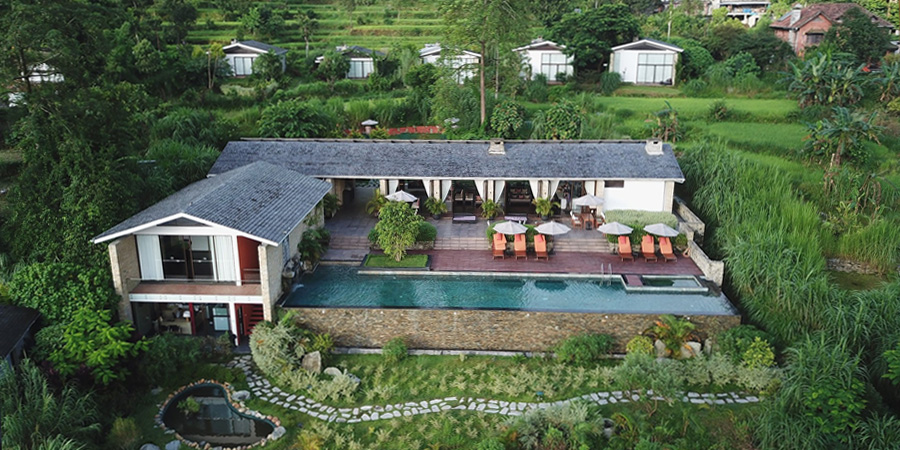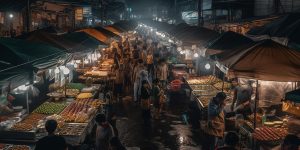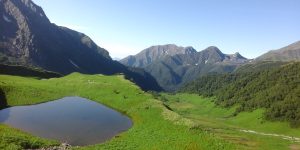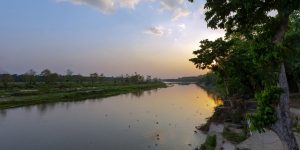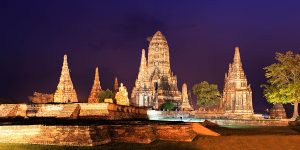Having survived the death road with 22 other passengers on a TATA Sumo (which has a max capacity of 11 passengers) from Ghale Gaun, we finally arrived at Besisahar, Lamjung. The bulldozer -terrorism-built road from Ghale-Gaun to Besisahar had shaken all of us, and we all complained of back aches. After wrapping up our work in Besisahar, we then moved towards Pokhara for discussion of a new project.
On our arrival at Pokhara, we realized that we were in for a treat. Over a pitcher of Mojito and munchies, we had a small briefing session on the development of an eco-friendly luxury boutique resort in Pokhara. While the briefing was going on, one thought was running in my head – “Not another so-called eco resort in Pokhara again, especially when most of the existing hotels are already having a tough time”.
Next morning, we were scheduled to meet Mr. Douglas Maclagan to discuss “The Pavilions Himalaya” project. Before dozing off the previous night, I had made an effort to research the Pavilions Himalaya Phuket and Bali properties over the internet. I was quite surprised to see such beautiful properties, and I realized this was not just any ordinary boutique hotel we were talking about. I was now excited to meet the visionary Mr. Douglas.
While my back was hurting like crazy and my head still buzzing because of the Mojitos we drank the previous night, I just had enough time to take a shower and make it for the meeting with Mr. Douglas at 8 am. With a folder in one hand and a bike helmet on the other, Douglas too arrived exactly at 8 am. After 25 years of living here, Nepal still hadn’t got the better of the Englishman.
As any typical conversation in Nepal would start, our conversation began with discussing the political scenario of Nepal and drafting of the constitution (which was a hot topic then). I guess the ice breaker for any conversation in Nepal is the discussion of the political scenario. Douglas then explained how Pavilions Himalaya would be an example for the hotel industry, employees, guests as well as the local community. Pavilions was to become a leading model of sustainable practices and eco-friendly operations. The operations of Pavilions were to be genuinely and visibly an eco-friendly “Green wash” and not “White wash”. The idea behind this project was to create a hybrid luxury boutique hotel and a village farm resort capitalizing on the hotel brand, Pavilions, to attract individuals, couples, groups and families. Pavilions was set to exceed expectations of the guests by showcasing the natural beauty of the region and providing the guests a meaningful and rewarding return to nature as well as philanthropy fulfillment experiences. Douglas, being a philanthropist, emphasized on the resort’s “give back” goals to the Himalayas. The goal was to provide 50% of the families in the village direct benefits and sustainable employment within the resort. Besides that, the resort was to contribute more than half of its profit to the community school and health post.
Douglas insisted that we go for a site visit to get a sense of what he was talking about. The two of us rode on his bike through the bumpy Pumdi Bhumdi road which would lead to the resort. The Pavilions Himalaya, Pokhara was set to be nestled in a picturesque village surrounded by farmland, forested hills and a gushing mountain fed river.
The Pavilions assignment began with registration of the company “Pavilions Himalaya Private Limited” at the Company Registrar office (CRO). During the entire process Douglas was very particular to mention that one of the main objectives of Pavilions Himalayas was that 50% of its profit would go for charity purposes. The aim behind this was to eventually develop a Pavilions Foundation set-up as the daughter philanthropic arm of the resort which would then have a grant available for disadvantaged and vulnerable women, under two themes–Protection and Education.
This objective of the boutique hotel was not very well received at the CRO as the objective of contributing more than half of the company profit did not fit into the standard format of the Memorandum and Articles of Association. Questions were raised as to why such an odd objective was to be included in the Memorandum and Articles of Association. This got me thinking as to why a company cannot dictate its own objective especially when it is for a good social cause. The CRO office maintained that this charity objective was to be removed but Douglas too remained adamant on having this as an objective. As the saying goes where there is a will there is a way, and after much haggling and convincing people at the CRO, the registrar agreed to make an exception and have the charity clause as a secondary objective. The Pavilions Himalaya was then finally established as a company. The bigger task at hand was getting the Foreign Direct Investment approval from the Department of Industries (DOI) and Nepal Rastra Bank. Though the government of Nepal introduced a One Window system to facilitate Foreign Direct Investment, what the government does not tell investors is that this one window leads to many doors. The irony is the number of rooms is directly proportional to the level of bureaucracy. The file keeps moving from one department to another within the DOI until many of the documents are torn and tattered. One will also learn that that the lowest ranked personnel of the department – the peon – holds the key to moving one’s file at the desired F1 pace.
After numerous cups of masala tea and haggling, the FDI was finally approved. The other FDI approvals from Nepal Rastra Bank happened in the same manner but we learnt here that persistence and continuous follow up is the key for success in a bureaucratic environment. The biggest lesson is one has to be an instant story teller of ironies at these government institutions to get their attention so that the approvals are granted in the shortest period of time.
Pavilions Himalaya has managed to set new standards in terms of environmental friendliness as it is predominantly off the grid. It generates its own electricity and uses biogas for the restaurant. Water is harvested, then recycled through wetland gardens in each villa, used for toilet flushing, and then in turn feeds the biogas plant. The resort also grows its own organic produce which literally comes off the land, in the pot, and on the guests’ plates. Pavilions has set a new benchmark for eco-friendly resorts in the country, something that should act as a yardstick for others in the same industry.

